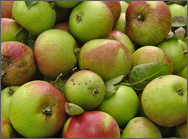Home Test To Assess Yeast Status
This is not to be considered a scientific test and certainly not as accurate as laboratory testing, but it is quick and easy to do, and it can give some idea of Candida status, an opportunistic yeast that has the potential to become pathogenic.
INSTRUCTIONS:
- First thing in the morning, on an empty stomach, fill a clear glass with water, and work up your saliva and spit into the water.
- Leave it for an hour or so.
- After the hour, look through the glass and you will see your saliva has become:
a. thin strands coming down from the saliva – this means a mild candida infection and which can be addressed simply with some dietary adjustments and a few supplements.
OR
b. if your saliva has all sunk to the bottom of the glass, – this means candida infection is systemic. That means you will need to address it fully: internally, dietary wise and nutritionally.
OR
c. if the saliva just remains on top of the water, with no ‘strands’ then candida is not the problem.
In Rosacea, and other conditions such as Allergies, Rheumatoid Arthritis, Asthma, Acid Reflux and indigestion, Depression, Anaemia, Lupus, Vitiligo, Eczema, Raynaud’s Syndrome, and many others, low stomach acid (Hydrochloric Acid or HCl for short) is a common finding.
HCl is a very potent acid that is able to kill food-borne pathogens (bacteria, including parasites) and can be considered one of the first lines of defence from invasion. The list of digestive diseases with a relationship to low HCl are too long to mention, but they range from constipation to cancer.
HCl has many functions, including the liberation of nutrients from food. It is not difficult to see that someone with low HCl over a long period will develop deficiencies, no matter what s/he eats.
If you are wondering how good your HCl levels are, try this simple home test:
VERY IMPORTANT – First thing in the morning, on an empty stomach:
Mix a quarter teaspoon of Bicarbonate of Soda into a small glass of water, and drink it down straight. Relax for a few minutes.
Home Test results:
If you belch dramatically and within 1 minute of swallowing this mixture, it is probable that you have excess acid. (the alkaline of bicarbonate neutralises the acid and gives off a gas in the process).
-
If it takes 2 – 3 minutes to belch, your levels of acid are probably normal. (first thing in the morning when your stomach is empty, the acid should be fairly low but still in an acidic state, hence the time delay in belching)
-
If it takes longer than 5 minutes to belch, it is very likely that you have lower than normal levels of stomach acid. (the chemical reaction took longer than necessary and the belching would not be nearly as dramatic as it would if levels were normal-high).
If you repeat this test several times over a 2 week period and get result 3 more than 50% of the time, you should further investigate this with a Nutritional Therapist with experience in Digestive Health.
Do You Have Food Allergies/Sensitivities?
If you answered YES to the above question, chances are you have already identified the offending foods, and hopefully, now avoid them.
Anyone at any time can develop a sensitivity to a food or even to several different foods. It is a complex subject, so I will not go into full details here. However, If you suspect (but are not sure) food sensitivities may be affecting your health, then try this simple home test on the two most common foods that people develop sensitivity to.
WHEAT and DAIRY (particularly from the Cow)
Write down a list of symptoms you currently have which developed over time, mostly without you noticing, but seem to have become worse not better. Some typical symptoms are: itchy skin, dull hearing, frequent colds/sinus problems, lethargy after eating, general reduction in energy, frequent bloating, puffy eyes or dark circles under your eyes, skin rashes, and spots.
- Decide which food you wish to test first.
- Choose the day you will cut that food out of your diet 100%. Do not reduce the food over a period of time, because the test will not produce obvious results. Write down the date.
- Cut the chosen food out of the diet 100% for just 14 days. Note down any improvements in the symptoms you listed in step 1.
- On day 15 you will be eating the test food, before you start to eat it, take your resting pulse (how many beats in one minute?) Write it down.
- Eat a large portion of the test food (a decent lump of cheese for dairy, a plate of pasta with just a little olive oil drizzled over it to test wheat). Do not have other foods with the food being tested.
- Take your resting pulse again at 10 minutes intervals after you finish eating the food being tested. (10 mins, 20 mins & 30 mins after) write them down.
- Over the next few days watch out for the symptoms that improved/changed while you were avoiding the test food.
If there was no change in pulse or symptoms then you are unlikely to be sensitive to that food.
If your symptoms improved while avoiding, and then returned after eating the test food, it is very likely that you have identified a food your body is not assimilating well. If your pulse changed by more than 10 beats per minute in the 20 minutes after eating the food, this supports the likelihood of sensitivity.
You can try this with any food that you think is doing you more harm than good, as long as you follow the instructions carefully, you can be fairly certain of the results.
You may be asked to perform any number of simple home tests when you become a client to help in my evaluation.
Nutritional Essence Team




